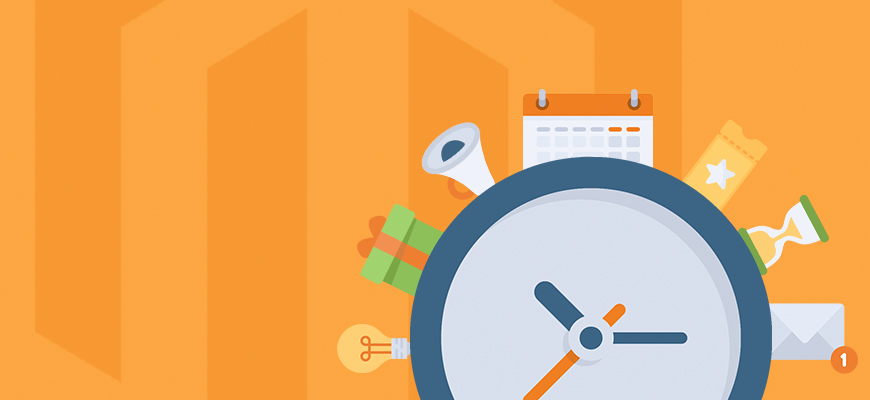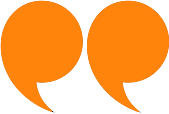What is The Best Time to Send Email?

What is the best time to send email? This is the question email marketing experts get a lot.
Getting your timing right is critical because it heavily impacts the open rate, which impacts click-throughs, which impacts traffic, which impacts conversions.
It’s all about getting that first domino to fall. Do that and the rest should fall into place.
There is no answer to the question. But let me pose another one:
Does definitive best time to send exist?
— No, it doesn’t.
There are an awful lot of studies that have been performed to define the optimal time to send an email — both the day of the week and time of the day.
There’s just one problem. Those studies vary significantly.

CoSchedule combined information from a list of key studies on the topic and learned
similarities and differences in the results.
Moreover, usually in marketing what works great for one brand may be inefficient for another and you can’t just accept the data from a single study as being completely authoritative. But at the same time, it doesn't mean you should leave all the research done aside. While the data from these studies may not provide a be-all-end-all answer, it’s certainly a good starting point.
Let’s get started.
Best Day
According to most studies working days have an essentially higher open rate than the weekend. As is seen from engagement metrics, subscribers are mostly active from Monday to Friday. Weekends, being considered as leisure and family time, show lower traffic.
In the meantime, all the studies mentioned above suggest different best time or day. But there is some consensus that Tuesdays with the highest open rate, Thursdays as a second best choice with a slightly lower rate, and probably Wednesdays are a good time to send emails.
Thus, the middle of the working week gets you the highest open rates, but mainly if you send informative emails that don’t require any action. But the highest click-through rate day to send sales or promotional email is the end of the week - Friday.
Best Time
The lifespan of an email is about an hour after they arrived in your inbox. The open rate drops to less than 8% after 4 hours. After 24 hours there’s less than 1% chance your email gets open. To avoid getting your email sent straight to trash, send it when people are reading their mail.
As with the best day to send an email, studies also vary significantly when it comes to the best time.
While many of the studies found varying results, here is how you can prioritize your send times based on data:
- 6 a.m. – 8 a.m: best time to engage your audience. This makes sense since 50% of you begin your day by emailing in bed. Before you even stand up, you're opening emails. Good morning!
- 9 a.m. – 11 a.m.: while late-morning send times were the most popular in general, several concluded that the best time to send emails is at 10 a.m. and another notable time is 11 a.m.;
- 12 p.m. – 4 p.m.: the best time for most opens or reads. This time lag is considered to be the tried-and-true strategy that works best for email marketing, as people are checking out of work mode or looking for distractions;
- 8 p.m. – 12 a.m.: second best time to engage your audience. I bet you didn't expect that one. It looks like emails generally receive more opens and clicks later in the evening. This is likely due to people checking their email before going to bed.
Sweet dreams!
Golden hours for eCommerce
The golden hours refer to when people are most likely to be in a researching or buying mindset. Most people are busy during the day putting out fires in their businesses, handling work-related tasks, or dealing with family matters. Studies show that people usually enter the researching, educating and buying mindsets later in the evenings and on weekends. These are the golden hours.
Additional Factors
Open rates aren’t affected only by send time. If you’re looking to increase your open rates, you’ll need to consider other factors, such as the frequency of your email blasts, the subject line, the length and appearance of your email message.
- Frequency: Most marketers send email blasts 2-3 times a month. But what if to use Hot Potato Effect? Schedule out the frequency of your emails based on your list.
- Subject lines: Subject lines are crucial in email marketing. It’s what gets your email opened and it’s probably just as important as the message itself. Give your email blasts an intriguing title, enough to tickle the curiosity of your audience. Pair it with a quality message and you’ve got a winning combination. If you have no idea, you can find some inspiration while checking these 164 best email subject lines.
- Length: Emails with 50 – 125 words had the highest response rate. But, the golden rule is: Less is best when it comes to email word count.
- Appearance: The appearance of your email on the screen, the paragraph organization, and overall aesthetics play a huge role in getting your message across. With over 42% mobile open rates, it goes without saying that your emails should be mobile-friendly. People want something they can skim read, write short paragraphs and include bulletin points. And yes, replace those 1000 words with an image.
The Industry You Are In
The optimal time to send an email will depend on what type of business you have. Moreover, every industry has its perfect open rate.
How do you rank against the rest? Let's check.
Know Your List
Best practices aside, you need to remember who you’re really sending your emails to.
If you’re only sending your emails based off general data - or worse, your work schedule - you’re not going to make any progress.
Occupation matters. For example, top executives like Tim Cook reportedly read their emails as early as 3:45 am! Sending an email to this crowd at 2:00 am may help you beat the rush.
What about the age? The age of your subscriber plays a large part in how likely they are to open their emails around a certain time every day.
People in different countries have different schedules. Thus, location and culture also matter.
Your subscribers don’t all have the same priorities, the same reading habits, the same device habits. Understanding the needs and habits of your audience can determine your email open and click-through rate.
You can, could, and even should be personalizing the emails they get. You could be using dynamic content to serve up the pieces of content they’re most likely to enjoy.
Knowing your list is a deal-breaker in your email marketing efforts.
But hold on ― we’re not done yet.
Time zone
The way those subscribers react to your emails isn’t based only on their interests, either. How they respond depends on where they are in the world ― what time zone they’re in. That affects how likely they are to open your emails. To reach your audiences who live in different time zones at the right time, customize your email send times.

NOTE: The big takeaway is to choose the time zone for the majority of your audience.
But that personalized timing is hardly the final frontier. Even if you could do the perfect email marketing study of when it would be best to send to your personal list, you’d still be missing out. And missing out big time.
BUT...
What we need now to succeed in this marketplace goes way beyond basic personalization and segmentation. We need to be able to personalize each customer’s email message based on a substantial range of factors:
- the time, they're likely to open an email;
- the buyer persona, they refer to;
- the content format, they're likely to absorb;
- the channel (other than email), they're likely to respond to; and so on.
The list could go on … but I think you get the idea.
Thus, even if you modeled an ideal buyer’s journey based on all of those parameters, you still wouldn’t have an ideal system.
Because every buyer is different...
In a Nutshell
So is there a trend of when to send an eCommerce email? Yes. It seems to be Wednesday at 10 a.m.
So should you just send your emails out on Wednesday? No!
That's the advice. Now ignore it. Why?
- Firstly, those studies and tests treat all the list’s subscribers as if they were the same.
- Secondly, those studies determine “the best” time to send based on clicks and opens. But what about conversions and sales?
- Finally, those studies are all well and good, but those other companies’ results are not yours.
There’s no one-size-fits-all kind of solution to the question “When is the best time to send an email?”
I know it sounds sad, cause all those researches, guidelines and articles — as well as the one you're reading right now, — on the topic, have no practical Your business is unique and different than businesses in other industries.
Use these 5 steps to find the best send time and day for your business:
1. Look at the trends
2. Think about your audience
3. Think about your campaign
4. Set expectations
5. Test...
...TEST, TEST, TEST
To find out what works best for you, A/B test your send times and do it as often as you can, cause the audiences, as well as business, can change.
It's recommended to re-run such tests at least a few times a year, by sending a part of your emails outside of the same sending window.
Top 10 Articles related to the topic:
1. HubSpot - When to send emails during the holidays?
2. HubSpot - 57 Email Etiquette Tips to Avoid Writing Sloppy Emails
3. SUMO - The Best Time To Send Emails: Your Data-Driven Cheatsheet
4. CoScedule - Get Full Visibility Into Your Entire Email Marketing Strategy
5. Omnisend - The Highest Converting Subject Lines For Black Friday Campaigns
6. Sleeknote - E-Commerce Email Marketing 101: 11 Must-Have Emails (w/ Templates)
7. Sleeknote - Are Your Emails Too Long? Here’s the Ideal Email Length (Backed by Research)
8. Mailjet - The Ultimate Guide to Email for eCommerce
9. Oberlo - Comparison of the Best Email Marketing Platforms for eCommerce
10. SuperOffice - GDPR for Marketing: The Definitive Guide for 2019
Did we forget anything? Let us know in the comment section below.
